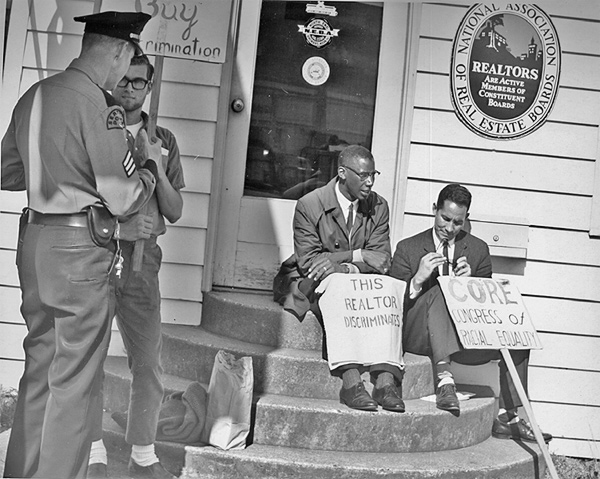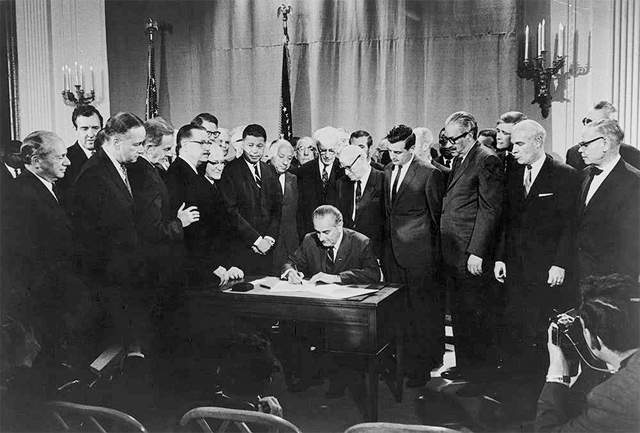The 20th century brought passage of the weak Civil Rights Act of 1957 and the more forceful Civil Rights Act of 1964. The civil rights movement of the 1960s reached fever pitch by 1968.
![]() Click on the two images below.
Click on the two images below.
Discrimination in housing was another issue facing African Americans and other minorities. There was a national movement to change discriminatory housing practices.

Source: Fair Housing protest, Seattle, 1964.
Congress realized there was a definite need for change. This photograph shows President Lyndon Johnson signing the Civil Rights Act of 1968, Title VIII, also known as the Fair Housing Act; the U.S. Department of Housing and Urban Development (HUD) was given the power to enforce this act.

Source: 0912001, Library of Congress
Have you ever seen this symbol? What does it mean? Where have you seen it?

Source: Equal Housing Opportunity Symbol, HUD
This signifies that the housing agent displaying this sign adheres to the Fair Housing Act, which found its roots in the Civil Rights Act of 1968. Read the summary below and answer the questions that follow in your notes.
The act explicitly defines a list of prohibited practices involving housing, including sales, rentals, advertising, and financing. Its primary prohibition makes it unlawful to refuse to sell, rent to, or negotiate with any person because of that person's race, color, religion, sex, familial status, handicap, or national origin.
Interactive popup. Assistance may be required.
The act may be necessary so that all people involved act fairly when giving people equal access to housing. A landlord may not want to rent to a family because of their race.
Interactive popup. Assistance may be required.
It may have been necessary to add the disabled because those affected might have had disabilities other than those traditionally recognized as disabilities.
![]() Read the following statements and determine which of the civil rights acts they describe. Place the statements into the correct locations in the chart.
Read the following statements and determine which of the civil rights acts they describe. Place the statements into the correct locations in the chart.